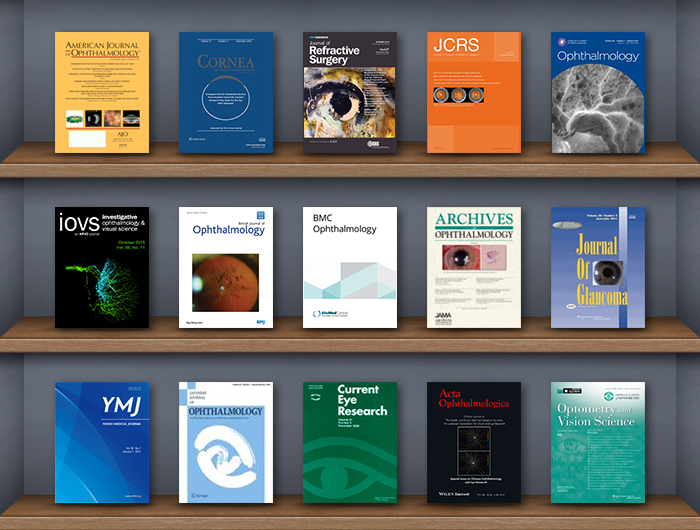
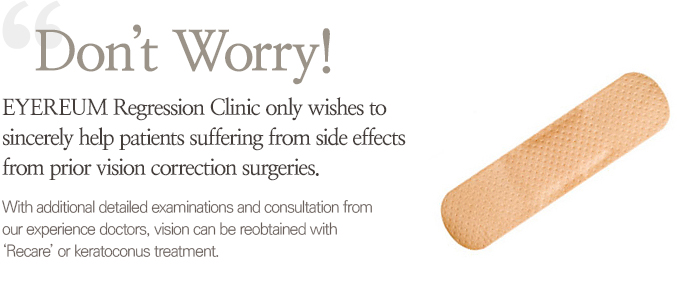
-

Choi received under-correction LASIK for excessive myopia in another clinic 14 years ago. Choi started to notice degrading in vision 5 years ago and was having difficulty because of blurred visions especially at night.
Recare + Co-Wave surgery
A customized CoWave surgery was performed to enlarge the narrow optical zone which was the cause of the blurred vision.

-

Cho had the optical zone reduced and received LASIK surgery 17 years ago.
cho’s vision wasn’t corrected enough and thus was having trouble driving at night and looking at the computer monitor. For the past 10 years, Cho had consulted many doctors for regression and finally came to EYEREUM.Recare + Co-Wave surgery + Collagen Cross-Linking
The optical zones of both eyes were enlarged through Recare CoWave surgery and the corneas were strengthened with the cross-linking procedure.

EYEREUM CoWave is the abbreviation for Corneal Wavefront, meaning ‘the waves on the cornea’. Just as uneven ripples are formed on a lake’s surface when a pebble if thrown in, each person has a unique wave pattern (HOA) on his or her cornea. And after any LASIK or LASEK surgery, a new pattern is formed. It is this wave pattern that affects the quality of vision and is the reason for night blurred and overlapping vision. The new wave pattern has to be calculated and predicted beforehand to prevent any side effects. This calculation and prediction is the customized procedure of CoWave.
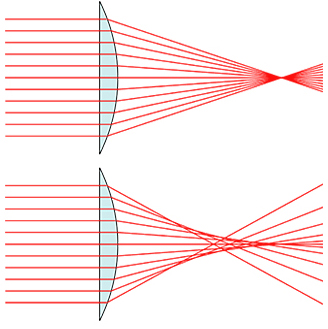
Prior the CoWave surgery, the patient’s corneal topography, the movement, zero point, circuit & position of the eye have to be accurately measured. The entire patient’s examination data is inputted to the AMRAIS REC SOT via an SD card to be applied for surgery. The laser’s entire movement is based on the actual patient’s examination data to minimize the HOAs and produce a much smoother corneal surface.
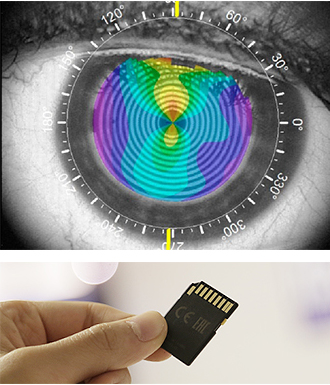
After surgery, vision can deteriorate if eye strain (asthenopia) is aggravated due to unhealthy living habits or overworking the eye. Eye strain can even sometimes lead to other side effects. So it is extremely important to manage your eyes after surgery.
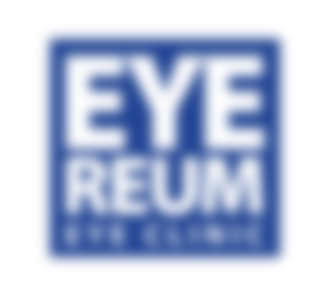

Irregular astigmatism can occur from vision correction surgery which was not centered properly or from irregular healing. It can be also caused by an unequally curved corneal surface. However with recent laser technology development, machine error hardly ever causes problems anymore. However if the laser is not accurately placed due to human error, there is always a possibility of irregular astigmatism.
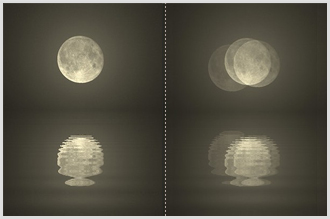
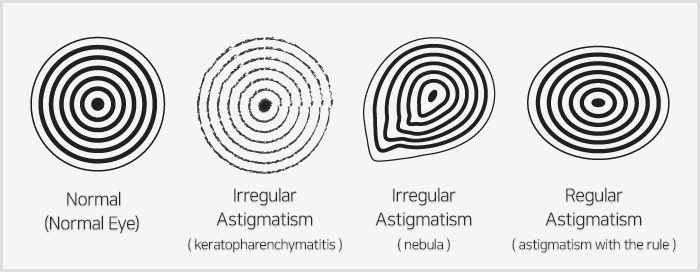
Some patients have complained about night vision problem, which is when looking at light in the dark, the light seems scattered or there is halo around the light. The pupils in our eyes expand in the dark in order to take in more light. If the pupil expands more than the laser carved area on the cornea, this side effect can occur. It is normal to experience night blurred vision right after any laser surgery, LASIK or LASEK. However, more than 95% of patients say that this uncomfortableness disappears within 6 months as their brains adjust to the changes. Unfortunately very rarely there are some patients who experience night blurred vision longer than expected. This is why EYEREUM only carves the corneal surface within the safety boundaries and performs CoWave surgeries to correct the HOA.
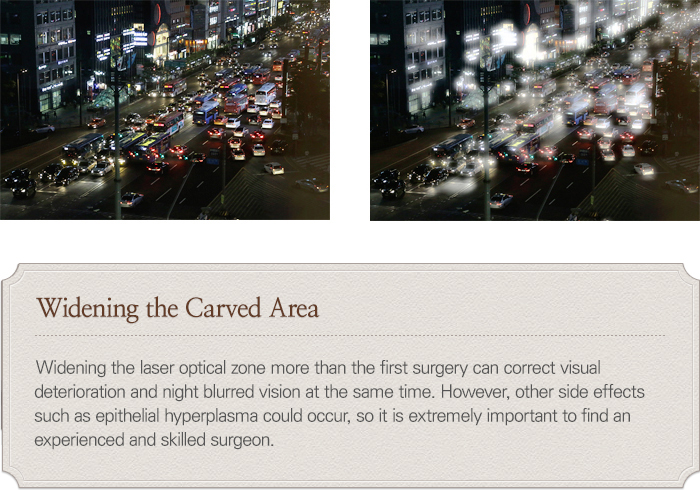
When using laser during any vision correction surgery, it is unavoidable to damage some sensory nerves dispersed over the cornea. This is what caused the dryness in the eyes.
Dry-eyes is most severe during the first week after the surgery, and you will feel some uncomfortableness for the following 3~6 months. Some patients are known to use artificial tears for up to a year especially in the arid climate areas. So if you have severe dry-eyes, it might be necessary to use artificial tears, optical ointments, or have eyelid hygiene procedure. However, if dry-eyes cannot be controlled pre-surgery, it might be necessary to delay the surgery altogether. Mentioned above, the main treatment for dry-eyes is using artificial tears, optical ointments, or autologons platelet rich plasma eye drops.
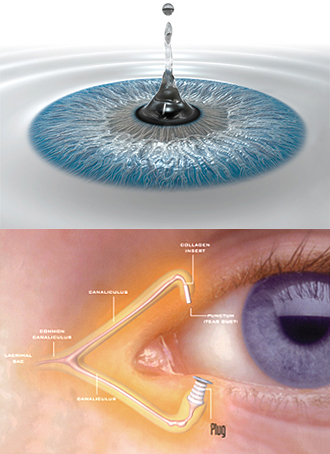

If symptoms are severe, you might opt to closing the punctum, or duct that drains tears from your eyes. Also taking supplements containing Omega 3 fatty acids and antioxidants and consuming nutrients that help the growth of tear components will help you control the symptoms. 98.2% of tears are composed of water, protein, minters and mucin. So too much use of artificial tears could actually dilute the natural tears and strangely aggravate the symptoms. Therefore, if you feel your eyes are dry and gritty, consult your ophthalmologist to find the right treatment for you.










